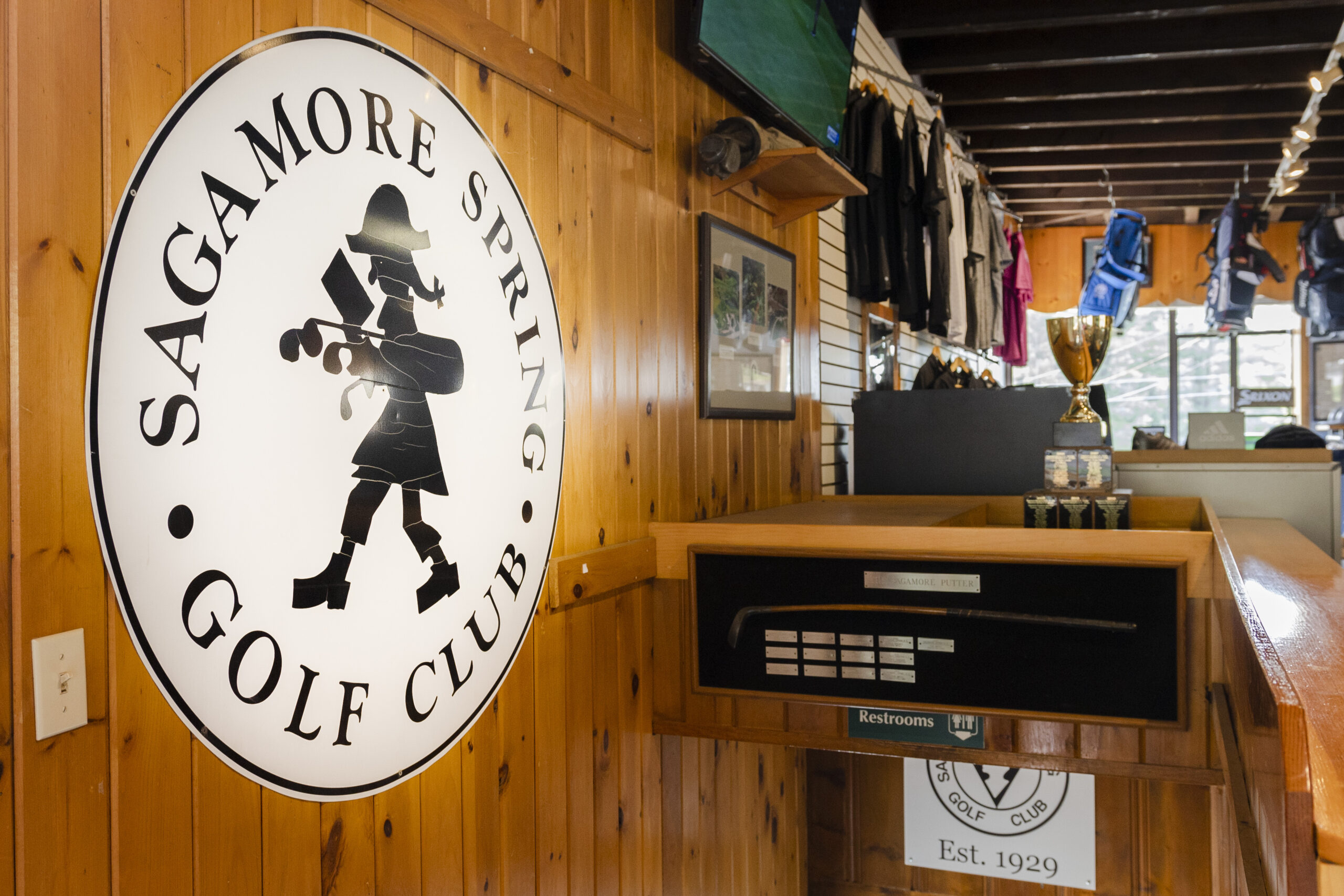Sagamore Spring Golf Course owner Richard Luff said his son was going through old documents from the course’s history when he made an interesting discovery. It came from a message written on a tax return — which was only one-and-a-half pages long — that the course submitted in the mid-1930s.
“My grandfather had written in the margin, ‘Not sure that this business will be economically viable in a couple of years due to economic circumstances and the increase in public golf courses in the area,’ which we got kind of a chuckle out of,” Luff said.
It is understandable that his grandfather, Richard E. Luff, would have been so skeptical of the course’s future. He was filing the return in the harshest years of the Great Depression and would have been concerned that Sagamore Spring, only years old at that point, would fail like many other businesses at the time.
Yet in 2023, nearly a century after Sagamore Spring first opened for play, the course has proven Richard E. Luff wrong with its longevity. All the while, it has remained a family-owned course committed to making the game of golf both accessible for newcomers and rewarding for veterans.
“It’s amazing that we’re here almost 100 years later,” Luff said.
Sagamore Spring was opened by Richard E. Luff, his father L.K. Luff, and L.K. Luff’s brother-in-law Al Strobel in 1929 — the first year of the Depression. Back then only the first nine holes were there for play, as the second nine opened later in 1931.
Luff said that the 1920s had seen a golf boom in the eastern half of the United States. Particularly, more public, daily-fee courses were opening, while the golf landscape had been dominated by private courses in the previous decades.
He said that L.K. Luff, as an accountant for the railroads, was traveling around the country. He spent a lot of time in Michigan, where he started golfing.
“There were some public golf courses there, because he didn’t have the time or money to join a private club,” Luff said.
When he came back east, L.K. Luff saw the need for a public course north of Boston, eventually buying the land for Sagamore Spring with Richard E. Luff and Strobel in 1926.
As a public, for-profit course Luff said Sagamore Spring has not hosted a lot of major events, other than annual club events like championships.
He did note, however, some political events at the course in its early days. A Daily Evening Item article detailed a Lynn Press Club outing there in 1929, in which a bout of golf was interrupted by a rainstorm. After the club sought shelter in “the old-fashioned homestead” adjoining the course, House Rep. William P. Connery Jr., a Lynn native, launched into a speech denouncing then-President Herbert Hoover’s naval disarmament policy.
The layout at Sagamore Spring is largely the same as it was originally built, but it looks completely different because trees on the course have grown and developed. Luff said that initially, Sagamore Spring looked like “a wide-open park.”
“I bet you people, if they came on the property today, wouldn’t really recognize parts of the property because of that,” Luff said.
He said Sagamore Spring is slightly on the shorter side by today’s standards, with a length of just under 6,000 yards.
“If you think about the ball flight back then, you didn’t quite have the technology and people weren’t hitting it quite as far,” Luff said. “And I always like to say, quite as far into the woods for your average golfer.”
Shot placement is important at Sagamore Spring, Luff said, due to holes fully-lined with trees and blind shots that reward local knowledge.
However, he said as a daily-fee course, Sagamore Spring does not have excessive challenges like long rough. He described the course as having a medium level of difficulty.
“Your average golfer, the whole objective here is you go out and have some fun,” Luff said.
The course has seen some renovations over the past few years, including rebuilding tees on the third and fifth holes. The fourth hole’s fairway layout was upgraded this year. While previously, drives would roll down a side hill toward a sand trap, Luff said the fairway is now on an elevated area with a better second shot and view of the green.
Every regular at a course has their favorite holes. Luff said one of his is the seventh, a par-four where golfers sit up high on the tee. It features a critical drive that he said must lean slightly to the right side. Then, there is a shot to a green that is wide, but short in length and thronged with trees.
“I love standing on that tee and hitting a tee shot, the way the hole lays out in front of you,” Luff said.
The 18th hole ends the course on a high note. Luff described it as a very difficult par-three uphill onto an elevated green. He said it is very deceiving, and that golfers must hit two clubs more than expected.
Throughout the course’s history, Luff said the bonds between staff and regulars, many of whom have been there for decades, have remained constant.
Sagamore Spring has always sought to make the game accessible and affordable. Past promotional materials for the course read “Golf is not expensive,” and offer rates ranging from 25 to 50 cents to play nine holes. Of course, the weekday rates have risen since, now at $30 walking for nine holes and $50 for 18. These rates are still much more affordable than those of the private clubs.
That is part of why so many people learned to play golf at Sagamore Spring. Another reason is the professionals who have taught there. Luff highlighted George Apalakis, often called George Apple, as an example. He said Apalakis “did more for the game on the North Shore than he’s given credit for.”
Apalakis was a pro at Sagamore Spring from 1946 to 1988 and was famous for selling and accepting trade-ins for clubs at unbeatable prices, which Luff said was unheard of.
“To this day, I hear stories every year of people saying, ‘I bought my first set of clubs from George Apple,’” Luff said. “He did everything he could to help people take up the trade.”
The course has remained in the family for its entire existence, retaining ownership by the Luff and Strobel/Thompson families. Luff said essentially everyone in the families has helped the course at some point in their lives, for different amounts of time.
He recalled his aunt, Jill Sandborn, who loved nature and valued its conservation. Luff said she took beautiful photographs of the course and helped renovate the area around the pond in the 1990s.
“People can bring different skill sets and different things, and to me that’s a perfect example where somebody was able to bring a passion of theirs and make it a contribution to the business,” he said.
With the course’s centennial approaching in 2029, Luff said the families keep trying to address how they will mark the anniversary, but day-to-day business gets in the way of planning.
A renovation or expansion of the clubhouse, which is only around 2,000 square-feet, could align with the anniversary. Luff said it could use a facility upgrade with modern amenities.
“That would be wonderful,” Luff said, “if that could coincide with 100 years.”

